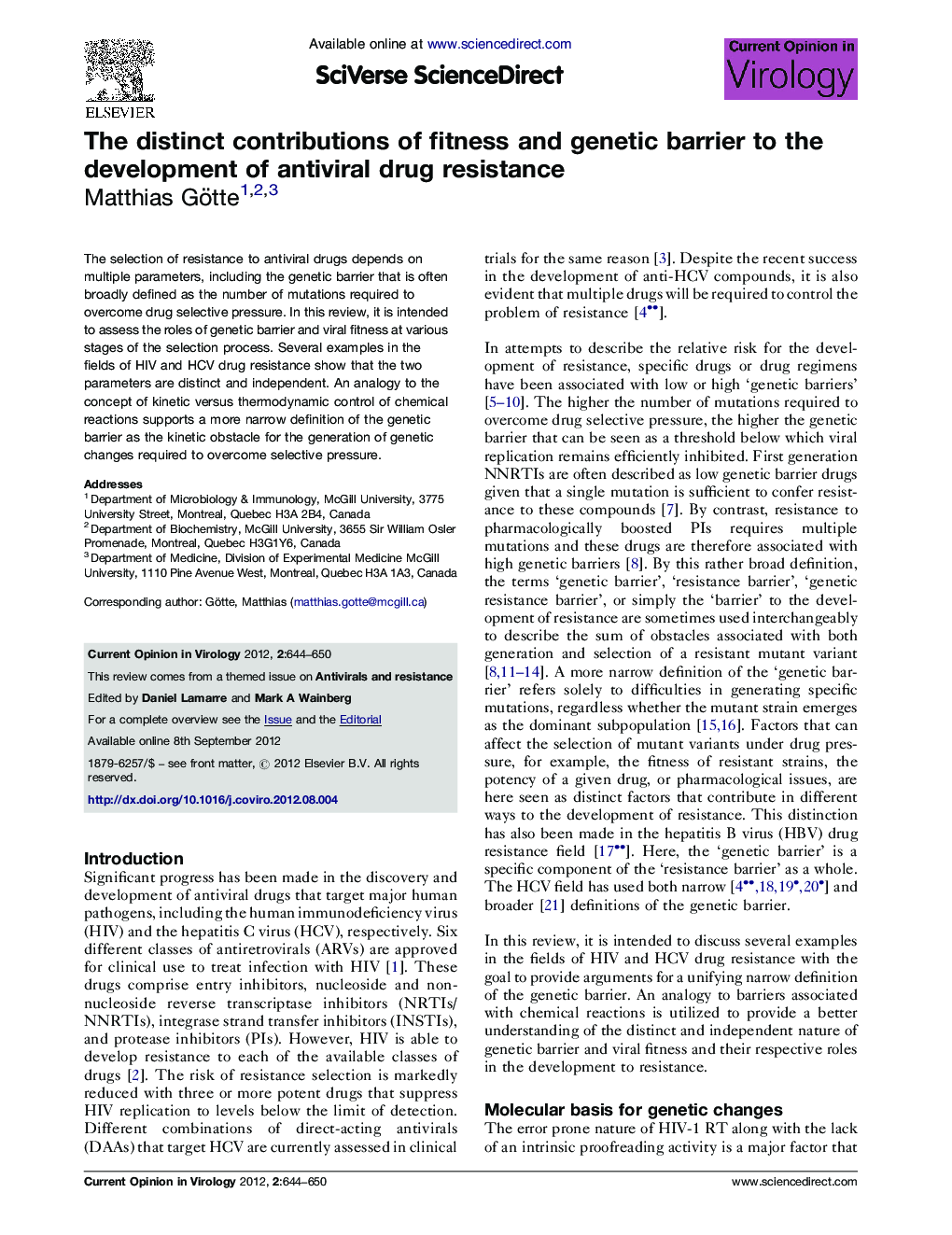| Article ID | Journal | Published Year | Pages | File Type |
|---|---|---|---|---|
| 5806944 | Current Opinion in Virology | 2012 | 7 Pages |
The selection of resistance to antiviral drugs depends on multiple parameters, including the genetic barrier that is often broadly defined as the number of mutations required to overcome drug selective pressure. In this review, it is intended to assess the roles of genetic barrier and viral fitness at various stages of the selection process. Several examples in the fields of HIV and HCV drug resistance show that the two parameters are distinct and independent. An analogy to the concept of kinetic versus thermodynamic control of chemical reactions supports a more narrow definition of the genetic barrier as the kinetic obstacle for the generation of genetic changes required to overcome selective pressure.
⺠Fitness and genetic barrier are distinct and independent factors in the selection of resistance. ⺠The genetic barrier is equivalent to the kinetic barrier of chemical reactions, while the fitness of resistant strains is equivalent to the stability of reaction products. ⺠Resistant variants with a low genetic barrier are rapidly generated and emerge early in the selection process, but they are not necessarily the fittest. ⺠Assays that measure and help to compare genetic barriers have yet to be developed.
